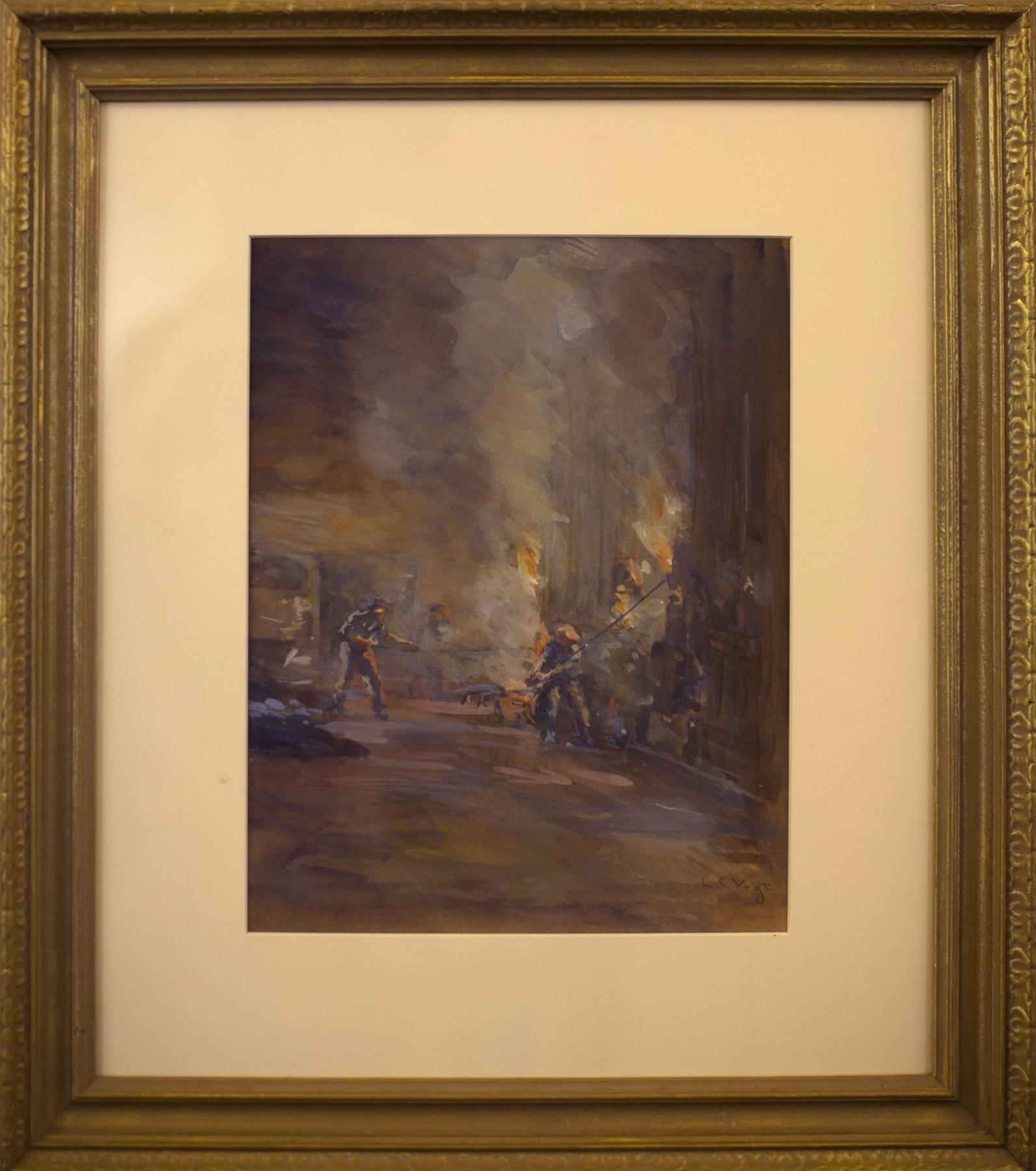The College of Engineering and Applied Science (CEAS) Library recently added labels to their collection of artwork. Visit the library at 850 Baldwin Hall and view part of the CEAS art collection. Many paintings adorning the library walls are from the early twentieth century and capture the prominent change of the beginning of that century in Cincinnati.
The start of the CEAS art collection:
In 1909, University of Cincinnati President Dabney put Dean Schneider in charge of the plans for a new engineering college building. While creating a home for engineering education on campus, Dean Schneider believed that not only did engineers need the practical experience of cooperative education, but they also needed an appreciation of the fine arts. An appreciation that was not something remote and rarefied but a part of their daily experience. The new college building built in 1911, Baldwin Hall, included paintings and murals to create that exposure to fine art that Dean Schneider hoped would create well rounded students.
The murals along the walls of the CEAS Library’s quiet reading room reflect the civil and industrial life in Cincinnati and show its river front, woodlands, bridges and buildings. The mural was a gift of the class of 1916.
With Dean Schneider’s encouragement, this gift of the class of 1916 started a tradition of leaving money to the college for the purchase of art works. With this, the walls of Baldwin Hall became an art gallery of original paintings, many of which can be viewed in the library.
Vogt’s work:
In the CEAS Library, nine paintings of the collection are painted by Charles Vogt (1864-1939). The Cincinnati-born artist studied at the Art Academy of Cincinnati under Frank Duvenek, most likely from 1907-1908.
Vogt was a talented painter, employing a very free style of brushwork and often rendering forms with broad, sweeping strokes of his brush. Throughout his career, Vogt favored images of his surroundings in the midst of change. With the arrival of the twentieth century, Vogt was fascinated by the emergence of industrialization and the development of the American city.

Vogt’s 1914 creation, Fountain Square in the Rain, with its new label.
In his paintings, Vogt repeatedly captured twentieth-century developments, particularly construction, transportation, and Cincinnati’s progressive spirit in the face of industrialization. In particular, he favored scenes of the railroad, both under construction and in use.
Vogt’s depictions of the effects of industrialization focused not only on the monuments of engineering prowess that marked American cities of the era, but also on the ways in which such progress affected the lives of people who inhabited those cities. In Men at Furnace, a beautiful painting in gouache, we are confronted with the difficult manual labor that made industrial progress possible, as several men work furiously to keep a furnace fire roaring.
Vogt left us an intriguing visual legacy: views of our city as it entered the twentieth century filled with ambition for its future.
To learn more about University of Cincinnati’s art collection, including the pieces at the CEAS library visit the UC Art Collection website.

